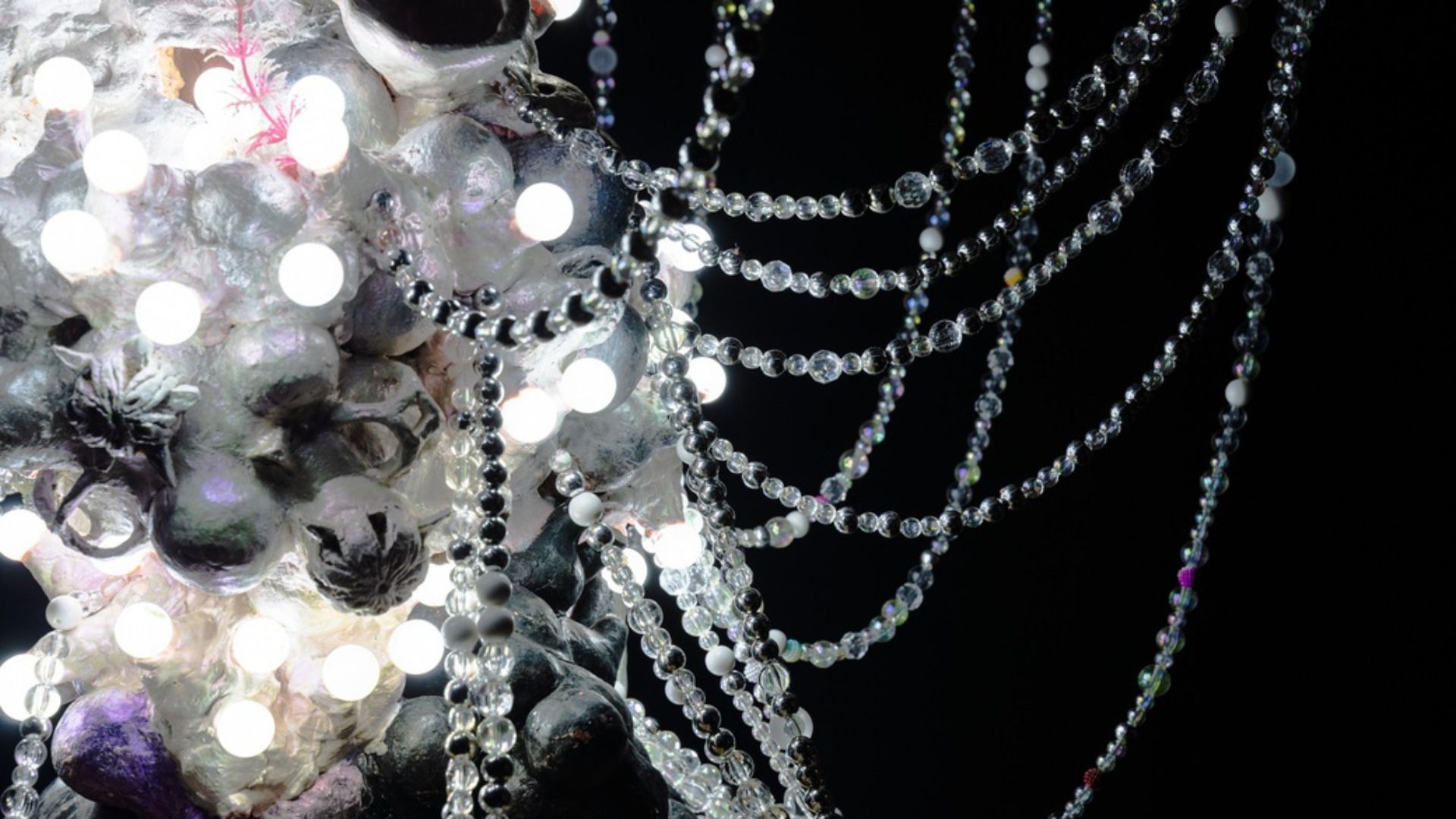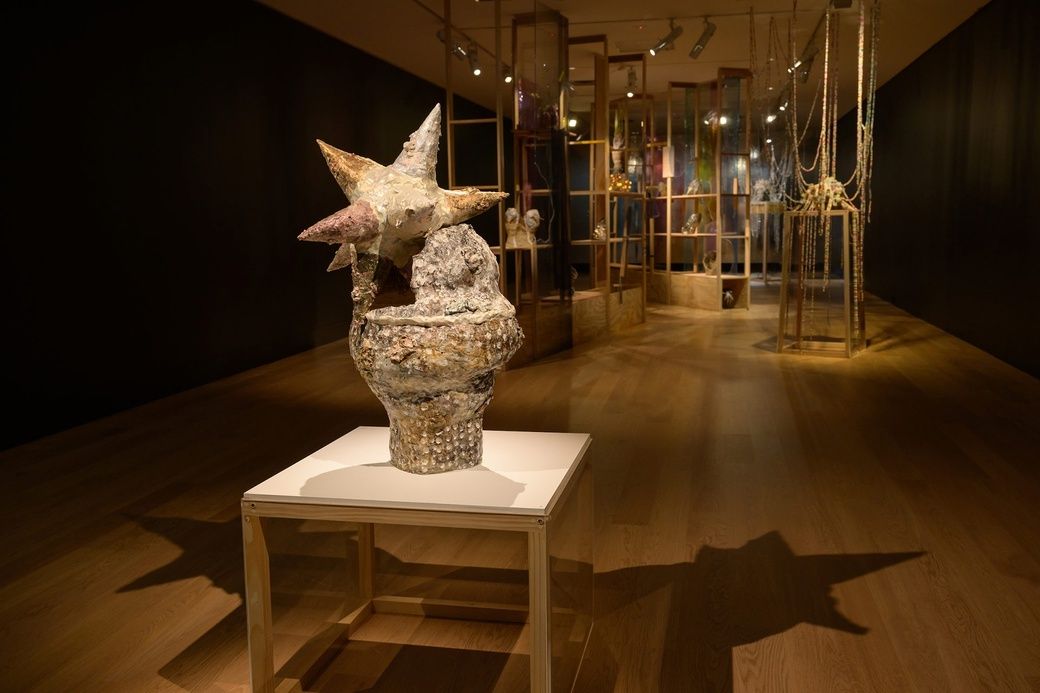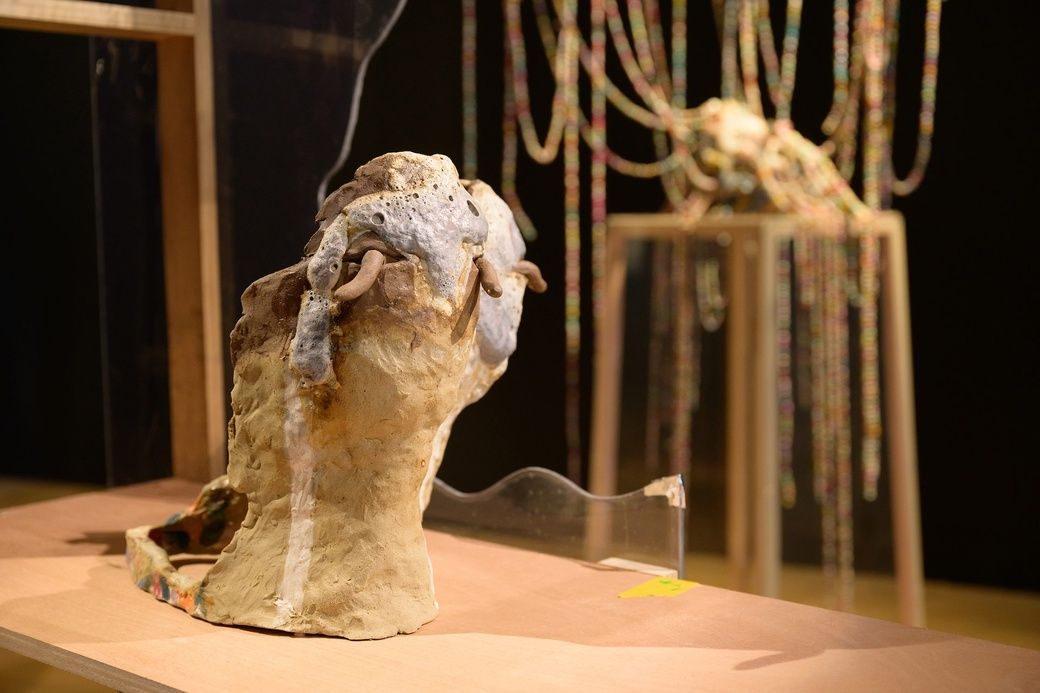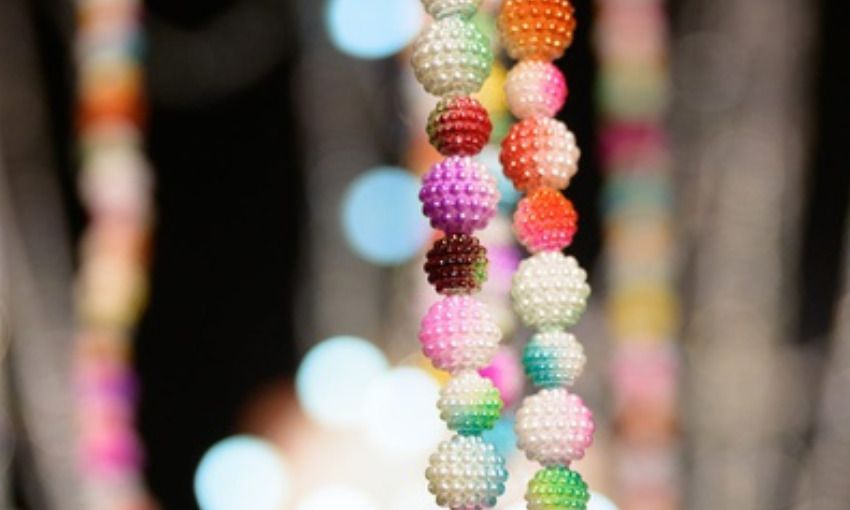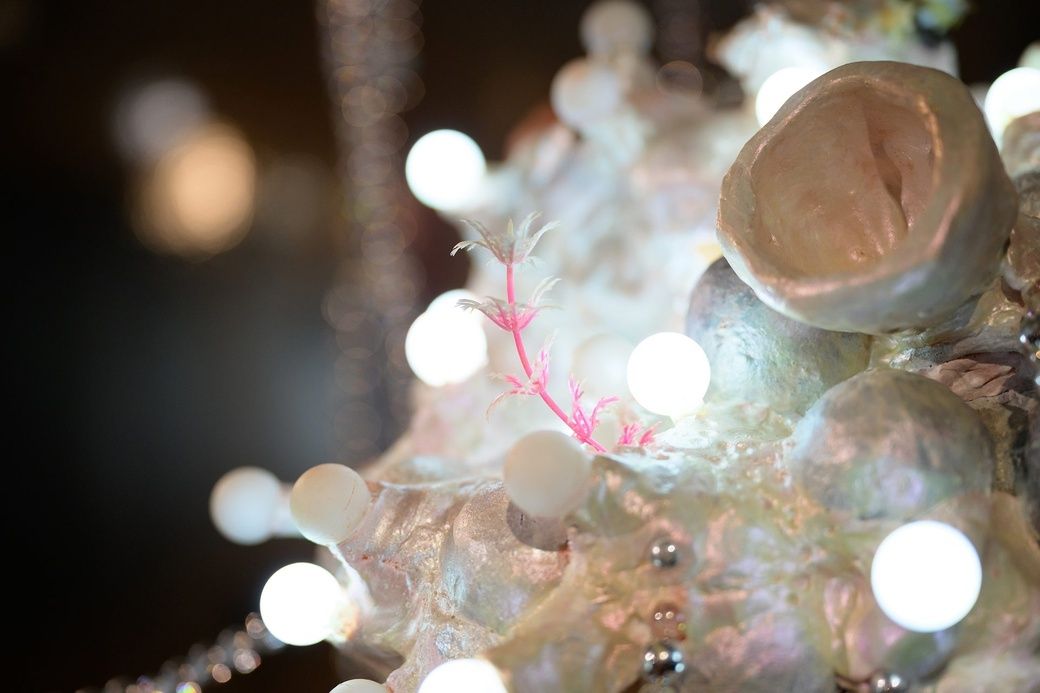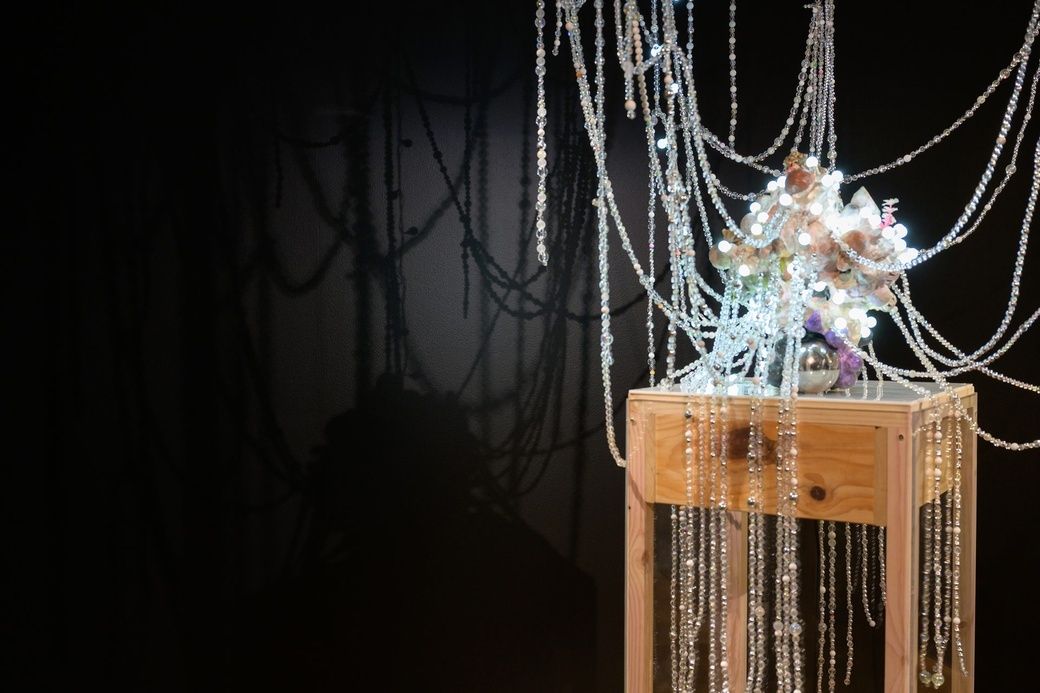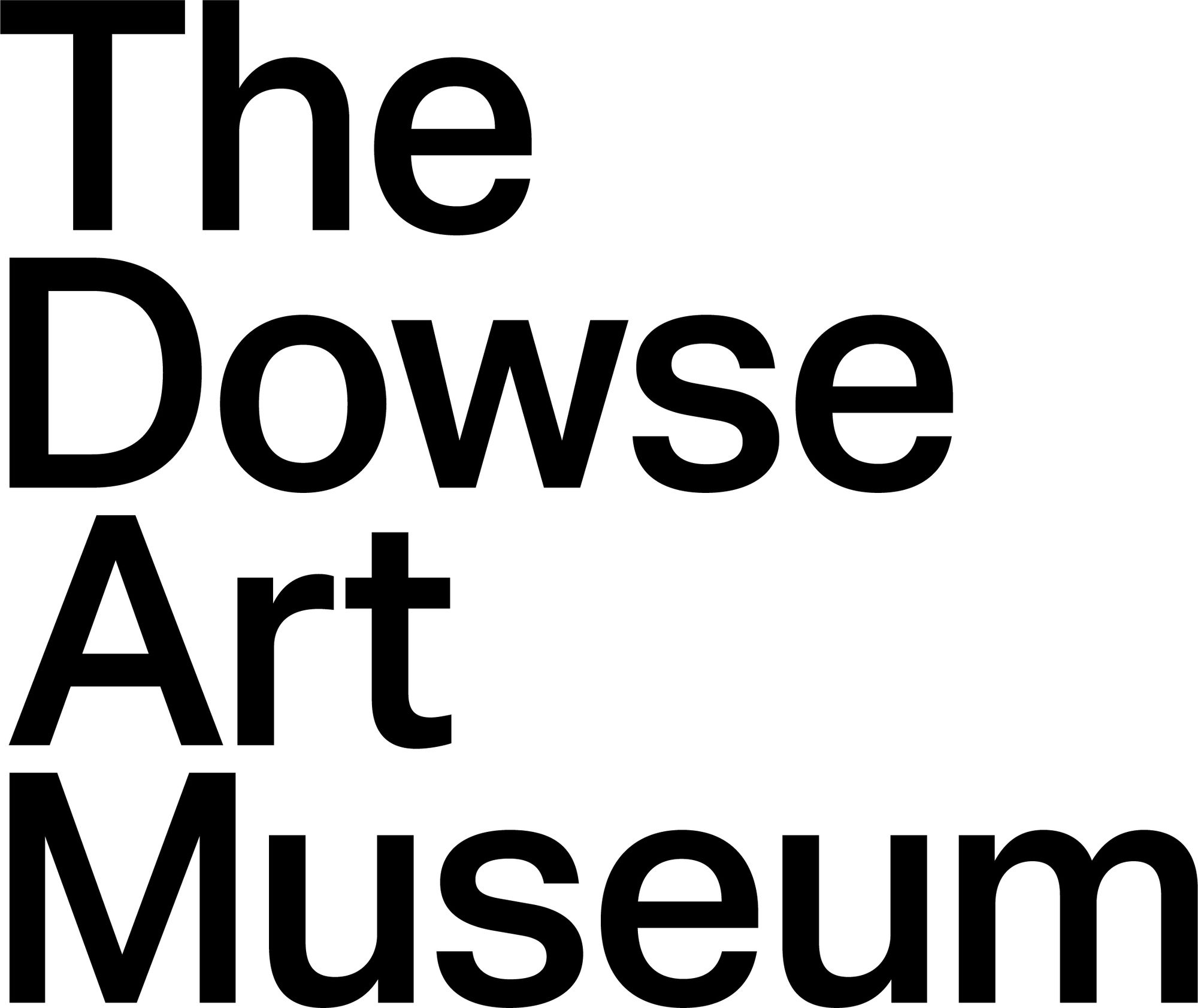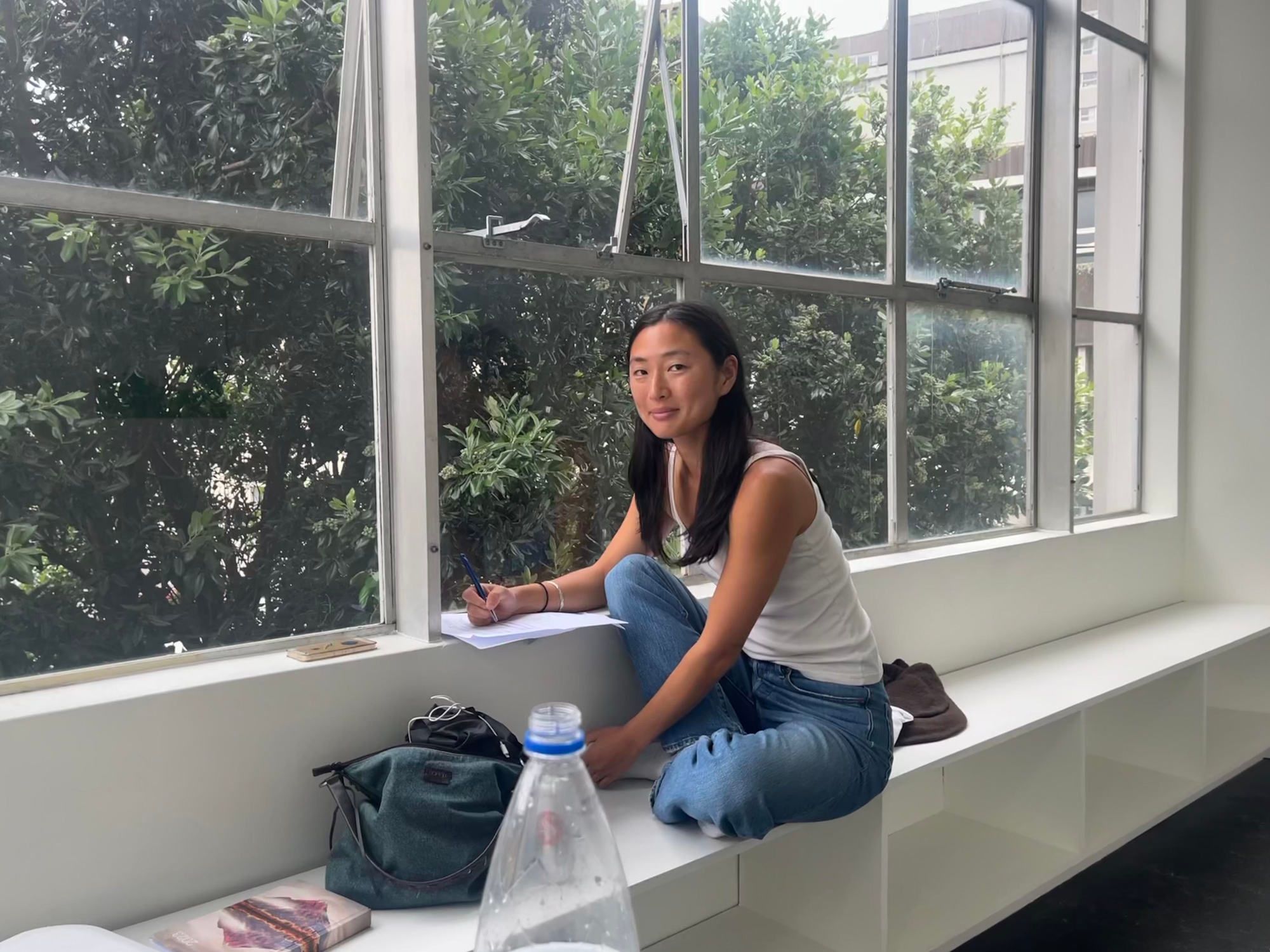Depth Sounding
Poet-turned-critic Joanna Cho 조은선 responds to Suji Park’s exhibition Noise Collector at the Dowse Art Museum. Feat. playful ceramics, interwoven connections, and the clamour of kids.
I haven’t written about art before. I feel slightly panicked, but it’s okay, I’ve done my homework. And I’ve read ‘art writing’, I go to shows and engage with art. I mean, I live in a city and I’m on Instagram, know who to follow, have a sense for things. Besides, how could a response be wrong? For this reason, I will make it known that this writing comes from the limits of my own emotions and knowledge and, as it’s hard for me to be impersonal, to avoid slipping into whimsy and nostalgia, I will write this as I experience it.
‘Say My Name’ by Destiny’s Child is playing in a room next door. Is it part of the exhibition? I make a note in my phone in case the song proves to be important.
The exhibition room is long, has black walls, wooden floor, and bright lights that look like searchlights. At the far end is a silver wall, paper or something appears to be glued on. It looks like a giant chewing-gum wrapper. The other pieces fill the rest of the space: bumpy, iridescent. It looks like the mise-en-scène from The Little Mermaid.
One should start by reading the wall text. It begins: I’m Korean but I’m not Korean. I am a New Zealander but I’m not a New Zealander. Am I in between? Am I a combination of things? I’ve realised it’s much bigger than that. Everyone is multidimensional.
Suji Park is primarily a ceramicist (an artform with a deep history in Korea) and her process with clay involves firing, breaking and then refiring to create layers of distortion. I like the way her process emotes the tension of existing – of being pulled, pressed, cracked, flung, baked – between places, cultures, ideologies. Coming from the earth and returning to it.
The tension of existing – of being pulled, pressed, cracked, flung, baked – between places, cultures, ideologies
Sunlight Zone
My boyfriend is here with me and suddenly I wish I’d come alone. I’m like, he’s white, he won’t get it. I’m uncomfortable, feel observed. I think best, work best, when I’m alone. I prefer noise I can control – that doesn’t demand active engagement. I ask him to leave; he does. He’s very understanding.
The first thing I come across is a chalice-type thing with a morning star on it – like a weapon. It’s got a metallic, rock-star vibe, like an eyeshadow palette: mossy green, kūmara purple, bronze, cream. It even casts a ‘rock on’ hand-gesture shadow onto the floor. I’m impressed by how much thought has gone into this – I also know that people can find meaning in something the creator didn’t consider very important. We desperately overlay meaning onto the nothingness of life, forming narratives. I’ve been meditating, anyway, I think the meaning of the vessel is pretty obvious, or at least to me it is – a vessel is open to so many functions and possibilities. A person, too, can be seen as a vessel – our ability and desire to hold memories, hopes, etc.
Suji Park: Noise Collector, 2022. Installation view, The Dowse Art Museum. Photo: Mark Tantrum Photography
I lean in unnecessarily close to take photos and notice that the side of the vessel looks like a cliff face. I’m shot back to the 90s, to an east coast beach, and wonder if Suji's family did the same thing: whenever Korean relatives or friends visited, we took them to Red Beach and foraged for molluscs and anything else with shells. At low tide, we rolled our pants legs and walked over the rocks, and our guests never believed our warnings to be heedful of the lichen, until they were slipping, grabbing whoever was nearby.
Twilight Zone
Through the glass doors I can see his legs – he’s sitting in the foyer. I feel a bit bad, but I take my work seriously. I don’t know the artist; I want to do a good job.
In the centre of the gallery runs a tall wooden shelving unit on which various clay sculptures are placed, reminiscent of marble busts in a museum, but, like, way smaller. There are also plastic sheets and cut-outs nailed on, and at one end of the shelving unit, a big blob of clay with a heavy skirt of chains, hanging by a neon-yellow rope. The whole thing is kind of messy, lo-fi. Yellow masking tape with numbers in red permanent marker has been left on the wooden structure. I have no idea why.
Whenever Korean relatives or friends visited, we took them to Red Beach and foraged for molluscs and anything else with shells
The clay figures have different patterns, colours and levels of glossiness, but are principally the same. Each has two pointy things at the front. A single crude tube of clay runs along the otherwise open back, which is strikingly unmade compared to the front. But the way they are displayed off the wall must mean the artist wants them considered. Total exposure.
For me, the clay figures are interpretations of dokkaebi / 도깨비 / Korean goblins. Those protruding bits are their horns. In Korean folklore and mythology, 도깨비 are formed by the spiritual possession of an inanimate object. They’re mischievous creatures, more naughty than evil, often playing tricks on humans or punishing them. I don’t know if this is what they are to Suji, but it fits so tidily within my understanding; I want to believe it and so I do.
There’s a bright playfulness to Suji’s art, but with rocky ridges of dark undertones, like the bottom of the ocean. The plastic cut-outs and sheets, tinted candy colours, appear to be disembodied, displaced body parts: head, torso, legs. The head has black tape over where its mouth would be. I think about language – losing it – and keeping quiet, carrying on. The suspended chunk of clay reminds me of a torture scene in a movie – sinister, demonic.
The bubbles in the laminate become self-caused blisters. The shadows on the wall crawl across the floor; become sharp teeth of silence. The silver reflection on the floor is a portal, a trap. The 도깨비 snicker.
Suji Park: Noise Collector, 2022. Installation view, The Dowse Art Museum. Photo: Mark Tantrum Photography
도깨비 have supernatural powers and can bring good or bad fortune, depending on the region and its traditional practices. Some people say 도깨비 are also mental illnesses or bad energies.
The gallery air is cold after the drive in the hot sun.
Midnight Zone
The doors slide open and a group of kids runs in, their mother following behind, pushing a heavy pram. One kid runs up next to me, points to the clay figures and says, “Eww, that’s disgusting!” The mum shouts “Oi!” and makes to rush over. Our eyes meet and she suppresses a smile.
The kids are on one side of the shelf, I’m on the other. I glimpse them through the windows of the plastic – a series of overlapping colours and movements, filling the empty space, a collaging effect. The installation seemed perfectly curated, but this random, unforeseen interaction gives it new magic, life. The kids run around touching things, running their hands through the beads. I think of an anthropology textbook from uni – something about art across time, across cultures, and of the pristine, antiseptic vibes of the Western, contemporary gallery, which prioritises sight as the most dominant and therefore valuable sense, and longevity as an essential part of art. Anyway, I think it’s cool the kids are touching the art, that they’re moved to; I’m too scared to.
Suji Park: Noise Collector, 2022. Installation view, The Dowse Art Museum. Photo: Mark Tantrum Photography
The other day I listened to a good art podcast. It’s by Bobo’s Void and is called ‘Why white people don’t season their food, and other musings about art’. She and her boyfriend Donovan talk about what good art is to them. They surmise that suffering does a lot to create really good art because it’s born from a need (it’s also a privilege to make art) and the good stuff is that which poses hard questions or makes you face truths. It explores the depths of the human condition for others to consider. But also, importantly, it’s entertainment, and should have the audience leaving feeling glad to have experienced it – even if it was difficult – and being in some way meaningfully changed. That’s the artist’s moral responsibility.
Kids run around touching things, running their hands through the beads
I struggle to reconcile my feelings around highbrow, ‘true’ art with its surrounding academic discourse, and the more pleb take of deciding the worth of an artwork by its aesthetics and how it makes you feel. My boyfriend and I have argued about this – he says yeah it might be wanky but you’ve gotta know the world you’re talking about, otherwise why write a response at all. To that I say, well, last time we were in Seoul, Mum was gone for hours and when she came home it turned out she’d been at the big Samsung art gallery, crying in front of a painting of a cow.
The mum seems very tolerant of her noisy kids. I imagine she’s brought them to the gallery on a Saturday because it’s a free activity in an air-conditioned building. I remember that’s what we did; I grew up going to galleries, I have a right to be here.
Abyssal Zone
The family leaves the room. I’m kind of gutted, I was enjoying their presence. A 2000s playlist is still audible through the walls. Probably not a part of the exhibition. I crouch on the floor, elbows on knees, face in hands. What the fuck do I know?
I know imposter syndrome very well. Recently I got grumpy at a bar because the people I was with were having intellectual chats about money – theorising, debating – and I felt dumb because I didn’t understand a lot of it and felt unable to participate, but I also felt like, having been raised on the dole and stuff, I had lived experiences that counted for something. I understood that both kinds of understanding mattered, but I felt shy and stupid so I got drunk in silence and then when someone asked my opinion on something all I could say was, “This is a very emotional topic for me!” and I ordered another beer.
Suji Park: Noise Collector, 2022. Installation view, The Dowse Art Museum. Photo: Mark Tantrum Photography
The next piece of art is two sets of coral-like pieces on transparent glass plinths, and above them, loose loops of beads. The coral colonies have round lights wedged between the blobs of clay, and they flicker in stages of three, like breathwork. It’s like a group of those fish with the lamps on their foreheads, partying. There are spots of nacreous colour, and dollops of silver glitter, like drips of $2 shop nail polish; ripped and dirtied sponge like art class in primary school; unexpected small growth – pink and green plastic plants. It’s hard not to think about climate change.
I wonder what Suji’s experience of growing up in Auckland in the 2000s was like. I read online that she’s lived back in South Korea for some years now, even doing a master’s degree in creative writing. I respect this so much – I’m currently reading my niece’s comic books to practise my Korean, but it feels like a chore. There’s so much self-doubt and guilt that comes from having neglected one part of your identity; of self-colonising to fit into a colonised society.
Inside the transparent glass boxes are electric cords, thick like eels. Suji shows us the mechanics of her designs, the methodology of her process – I’m walking in her mind, which she’s opened up like an explosion box.
Suji Park: Noise Collector, 2022. Installation view, The Dowse Art Museum. Photo: Mark Tantrum Photography
The beads are like chandeliers, or wide embraces. One set of beads is multicoloured and reminds me of jungkook – Korean star candies. The other set is clear, with spots of colour in between, like beads on a rosary. I think I read online somewhere that the beads symbolise generations – it feels festive, ceremonious, and I think of jesa / 제사, an annual memorial to our ancestors, and how it’s a shame I won’t be able to teach my kids how to do this, not genuinely.
The final works are the silver wall, and the silver-and-white A4-ish-sized plastic-encased thing on the wall. It’s filled with trapped bubbles, fissures, cracks. The silver is kaleidoscopic. Some of the white bits look like sugar being dissolved. This is my favourite but it’s the one I have the least to say about. Sometimes art’s just beautiful; I won’t apologise for saying it.
I’ve been thinking about how space in the gallery for an artist, and space on the page for a poet, have similar purposes. Space can do so much work – it’s just a very thick outline. It can press against shapes, gently revealing forms, or even the creator’s state of mind – hurried, at peace – as well as what they’ve chosen to reveal, and therefore what they’re deliberately hiding. It can guide you to breathe, to imagine.
There is a musicality to the work, like a good poem. Suji is also a trained pianist.
Sometimes art’s just beautiful; I won’t apologise for saying it
The Trenches
He’s been napping. I nudge him gently with my foot. “Oi, I’m done.”
Before going to the gallery, we were at Chris Tse and Simon Armitage’s talk at the National Library. Simon spoke of how a poet is much like a sculptor or painter, forming words on the page, unlike other writers who let the typesetter have control. Chris spoke of how readers meet the poet on the page and decide how far they are willing to go with them. I thought of kids, and how they latch on to adults who display decisiveness, confidence. I thought of how a magic trick is most impressive when you can still believe in the magic, even after it’s explained. Suji’s work is intuitive, grounded and open – enchanted, I’ll follow it.
Her work got me thinking about how we exist in this mess of varied, sometimes discordant noises – but that’s living, aye? In other words, the other night, at his flat up Mount Vic, we could hear multiple bands playing across the plains of the twinkling city below. At first, the sounds were distracting, annoying, overwhelming, but soon they evened out, like the sea settling after the wake of a boat, becoming a part of the sky, of the night.
We all have multiple identities, and expansions across space and time. And while we engage with each part a little more or a little less, depending on the context, there’s no such thing as isolation. Everything overlaps – you are a result of all the people and places you’ve interacted with, creating a flow, a wash, a thing that exists now – and it’s this layering, of contradicting desires and experiences, that is what it means to be alive, imho. No mould to it, just life bubbling forth.
Suji Park: Noise Collector, 2022. Installation view, The Dowse Art Museum. Photo: Mark Tantrum Photography
When I think I want to be alone, usually it’s because of a fear of not connecting. But when I do connect, deeply and securely, it feels like both floating in the sea and being grounded to the earth.
We come from the sea. It was algae, and then moss, and then trees, and then a migration to the land.
Aotearoa and Hanguk / 한국 / Korea are both islands. Suji Park is connecting with the past, engaging with the present, and leaving a story behind for posterity.
When you take a nighttime dip in the sea and your head’s under, it feels quiet, like you’re alone, but that’s not quite true, is it?
Suji Park: Noise Collector
The Dowse Art Museum
Te Awa Kairangi ki Tai Lower Hutt
05 Nov 2022 – 02 April 2023
*
This piece is presented as part of a partnership with The Dowse Art Museum, which covers the costs of paying our writers while we retain all editorial control.
Header image: Suji Park, Beatdoll III, 2022. Courtesy of the artist. Fired clay, paper clay, eper, glaze, resin, acrylic paint, LED lights courtesy of the Artoxy Clay, plastic, foam, plastist. Photo: Jungwoo Lee.
